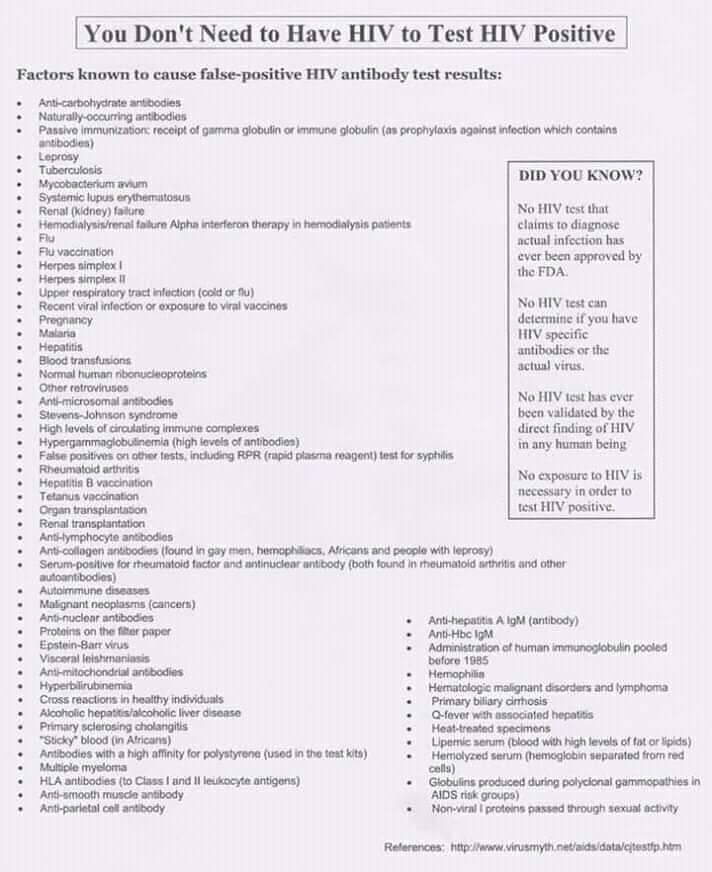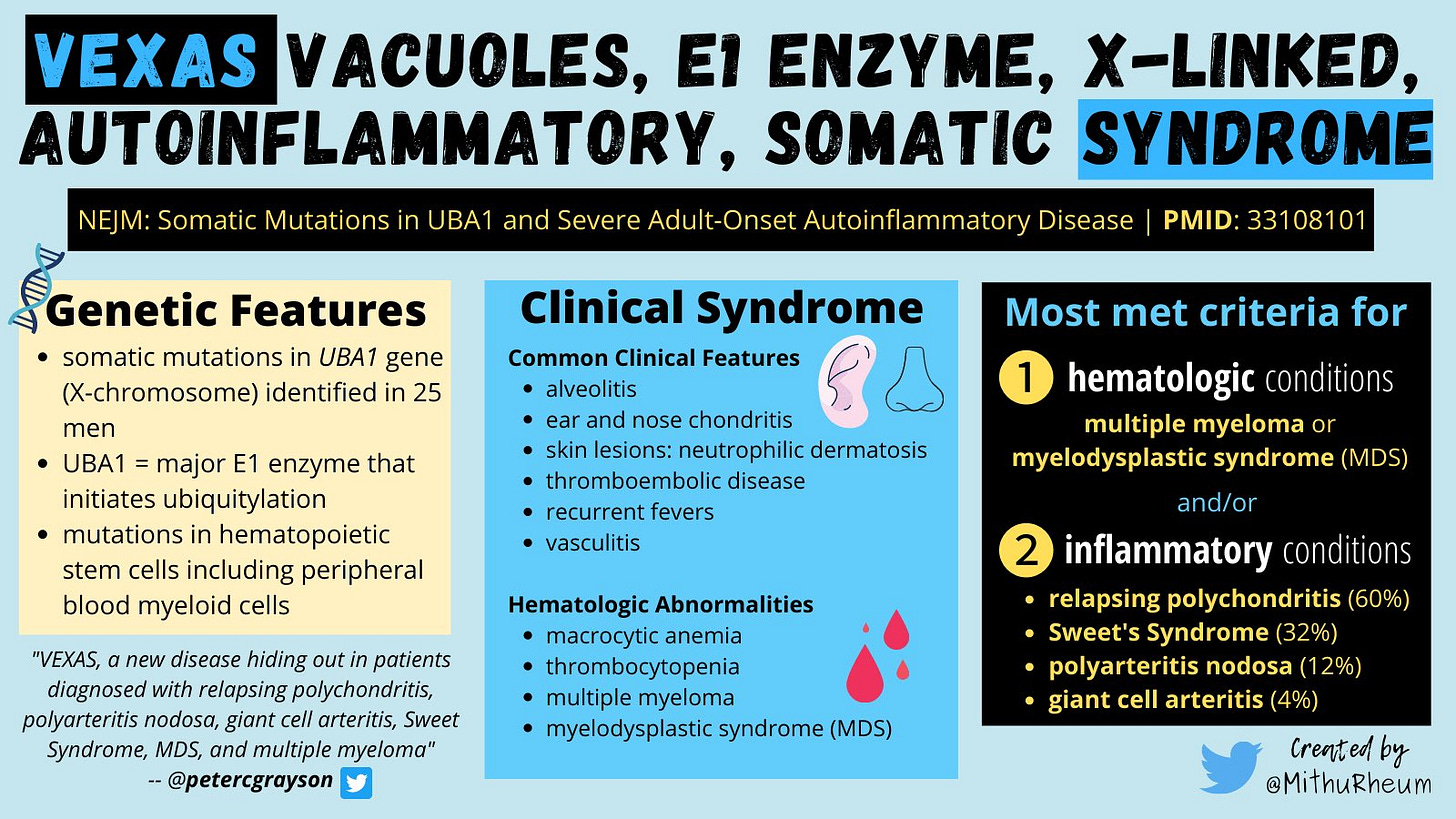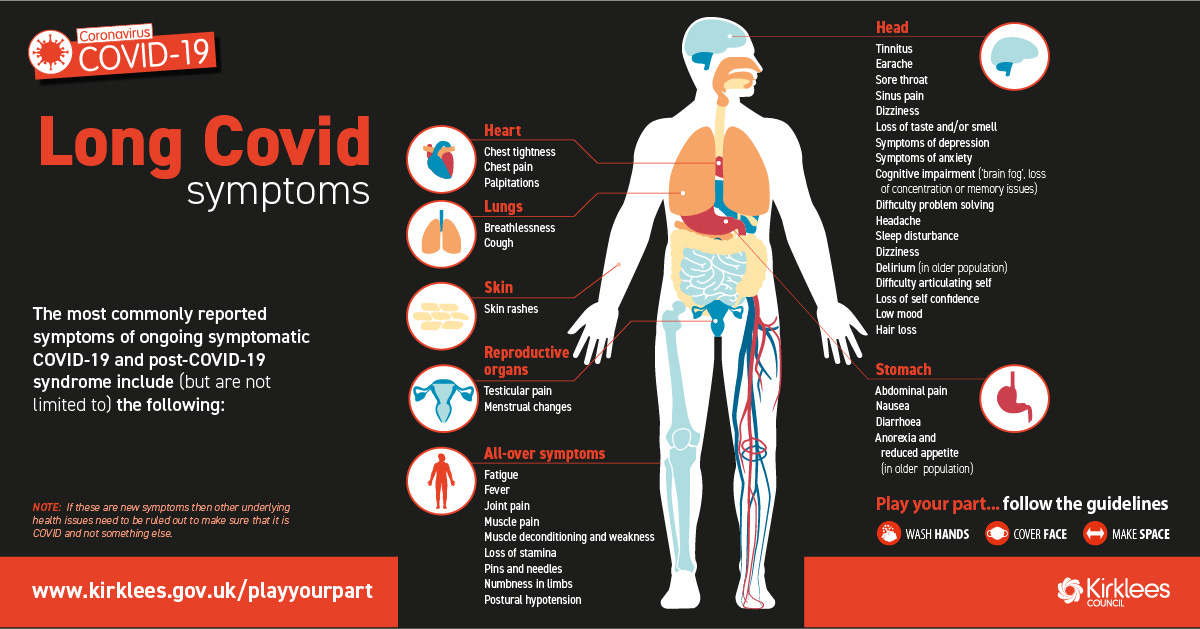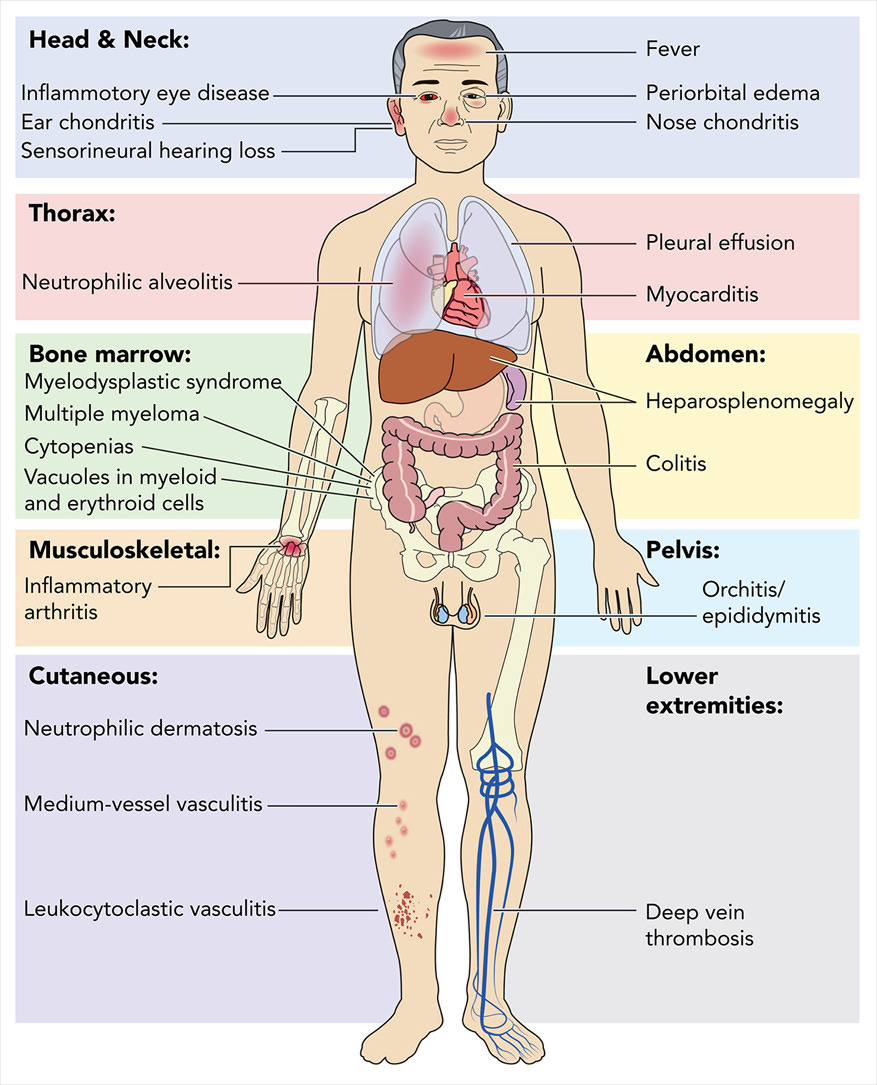I recently wrote about the magic tricks utilized by virologists to create the appearance that a disease has either been successfully eradicated or diminished due to vaccines. These tricks included breaking the same symptoms into new diseases with different “viral” and/or bacterial causes as well as changing and manipulating the way a particular disease was diagnosed. With that ruse exposed, it's time to examine how these tricks are employed to create the illusion that a new “viral,” bacterial, or mystery disease exists.
The creation and confirmation of a “specific” condition is linked entirely to how it is diagnosed. This process has been manipulated throughout the centuries to look for the most minute differences at both a macro and micro level. In the past, diseases were said to be differentiated based upon clinical symptoms. However, this in and of itself, was a mirage as many diseases presented with the exact same symptoms. The “specific” clinical signs, such as the type of pustules and/or the order in which the symptoms presented themselves, were indeed not specific and often times overlapped with various other conditions. Any “differences” were miniscule and were entirely subjective as seen in this example of the interpretation of the differential diagnosis of smallpox and chickenpox with renowned physician William Osler:
At the time, however, even physicians, had trouble telling the difference. In one famous account of Osler’s skills as a diagnostician, he was called in to show his students what had been pronounced by several distinguished physicians at Johns Hopkins to be a severe case of chickenpox in an adult male. Interested, he gathered 30 or 40 students and doctors, and went to take a look. When the hapless resident pulled back the sheets to reveal the patient’s symptoms, a horrified Dr Osler exclaimed, “My God, Futcher, don’t you know smallpox when you see it?” Isolation measures were immediately put into place, the necessary vaccinations administered and a potentially disastrous situation was averted.”
http://www.doctorsreview.com/history/thinking-outside-pox/
As clinical symptoms alone were not enough to make an accurate diagnosis, clinicians looked deeper than the superficial symptomology in order to establish a difference. They attempted to find other indicators of disease by examining tissues under the microscope. This led to claims such as the damage to the anterior horn being indicative of polio or finding Negri bodies in brain tissue examinations being specific to rabies. However, even these measures proved to be non-specific, and the findings could often be associated with other causes and conditions.

Thus, researchers were forced to go even deeper in order to find a way to diagnose a disease beyond superficial symptoms and tissue examinations. This led to looking at certain indirect biomarkers in the blood and bodily fluids in order to claim an infection by a specific “virus” or bacteria. A prime example of this is the CD4 cell count used as an indicator for people said to be infected with HIV. In 1993, the Centers for Disease Control and Prevention added a CD4 of less than 200 cells/mm3 as an AIDS-defining condition, which meant that low CD4 cell counts were now a sign of a worsening condition and characteristic of AIDS. However, CD4 counts can vary throughout the day and are said to be influenced by various factors such as circadian variation, infections from other “viruses,” stress and fatigue, chemotherapy, corticosteroids, alcohol, nicotine, and even exercise patterns and pregnancy. Thus, these seemingly “specific” biomarkers can be influenced by factors outside of a “virus” and can be seen in other conditions.
Another biomarker said to be an indicator of HIV is the p24 antigen. However, according to studies uncovered by the late Dr. Roberto Giraldo, this protein along with others said to be specific to HIV, may not be encoded by the HIV genome at all and may in fact represent human cellular proteins. It is also well known that the antibody tests, said to be specific to HIV, can react to over 70 other conditions. Thus, both antigen and antibody tests are not specific to HIV whatsoever.
As the many attempts to claim that specific symptoms, tissue changes, and biomarkers turned out to be not that specific after all, and in many cases cannot be used in order to obtain an “accurate” diagnosis, researchers went even further into the micro world to find clues. This led to the development of molecular biology and virology with the creation of PCR tests. These tests were claimed to be able to find tiny fragments of RNA said to belong to the “virus” or bacteria in question in order to diagnose cases of a particular disease. However, this method of looking at strings of A,C,T,G's to claim one “infected” was never meant as a diagnostic tool. This was stated by the inventor of the technique itself Kary Mullis:
“I think misuse PCR is not quite… I don’t think you can misuse PCR. The results, the interpretation of it, if they could find this virus in you at all, and with PCR, if you do it well, you can find almost anything in anybody. It starts making you believe in the sort of Buddhist notion that everything is contained in everything else. Right, I mean, because if you can amplify one single molecule up to something which you can really measure, which PCR can do, then there’s just very few molecules that you don’t have at least one single one of them in your body, okay. So that could be thought of as a misuse of it, just to claim that it’s meaningful.”
“It’s [PCR] just a process that’s used to make a whole lot of something out of something. That’s what it is. It doesn’t tell you that you’re sick and it doesn’t tell you that the thing you ended up with really was going to hurt you or anything like that.”
https://www.featured.tv/watch/Dca6LGp5uwj4fzP
In other words, finding fragments of RNA said to belong to a “virus” tells one absolutely nothing and is, in essence, meaningless. This conclusion is supported by the CDC's EUA for its PCR test:
“Detection of viral RNA may not indicate the presence of infectious virus or that 2019-nCoV is the causative agent for clinical symptoms.
• The performance of this test has not been established for monitoring treatment of 2019-nCoV infection.
• The performance of this test has not been established for screening of blood or blood products for the presence of 2019-nCoV.
• This test cannot rule out diseases caused by other bacterial or viral pathogens.”
https://www.fda.gov/media/134922/download
Even virologist Charles Calisher warned the new guard of virology against relying on “a string of DNA letters in a data bank” in order to determine anything about disease:
“Although all that is terrific, says Calisher, a string of DNA letters in a data bank tells little or nothing about how a virus multiplies, which animals carry it, how it makes people sick, or whether antibodies to other viruses might protect against it. Just studying sequences, Calisher says, is “like trying to say whether somebody has bad breath by looking at his fingerprints.“
Sadly, Calisher's warning has not been heeded and the “scientific” community is going further and further into the madness of the invisible micro world in order to make claims which have not been backed up by scientific evidence, such as finding certain sequences or genes and claiming them as a cause of disease.
For instance, in 2013 actress Angelina Jolie shocked the world when she announced that she had removed both of her breasts due to the discovery of a genetic mutation in the BRCA1 and BRCA2 genes, which was said to increase her risk of breast cancer. These genes are normally claimed to protect against cancer yet, if the test comes back showing a mutation in either one, the genes are then blamed for an increased risk of breast cancer. Since then, prophylactic double mastectomy surgeries have become more prevalent as fearful women mutilate their bodies due to the imaginary threat posed by strings of letters in a database that are fraudulently correlated with an increased chance of disease.
This reliance on indirect unscientific evidence and the focus on correlation equaling causation to claim causes of disease has continued to become increasingly prevalent and more ludicrous as time has passed. As an example of this evolving molecular insanity, I want to share an article that I stumbled across recently. It discussed the discovery of a “new” condition known as VEXAS and how it was ultimately diagnosed. As I feel that this story is a sign of things to come if we do not expose this molecular diagnostic scam, I wanted to examine this autoimmune condition which was conveniently “discovered” in October 2020 on the eve that the vaccines were put into wide use. While there is not much information out there at this time, there are some strange similarities to what people are currently going through in regard to “Covid,” “long Covid,” and the mRNA vaccine injuries. Let's explore this syndrome more in-depth and see what tricks were used to bring it to life.
The first article is from NBC News, which announced, in late October 2020, the finding of VEXAS as “discovered” by a team of scientists at Anthony Fauci's home turf the National Institute of Health (NIH). It is stated that the patients ultimately diagnosed with the new syndrome were suffering from symptoms such as unexplained fevers, blood clots and inflammation of the cartilage, lung tissue and blood vessels. They were deemed unresponsive to strong doses of steroids as well as to chemotherapies. This information about the patients and their treatments, however, is very misleading as it implies that the NIH researchers had a group of patients with similar symptoms that they were investigating and treating. Yet, this was not the case at all.
While the discovery and diagnosis of a disease is historically made based upon shared clinical symptoms amongst a group of patients, this was not how things were done in the case of the patients labeled with VEXAS. With the advent of molecular biology, we are to believe that it is now possible to bypass this process of clinical diagnosis altogether through the use of genomic sequencing. All the researchers need to do is to identify a certain gene that they claim is linked to disease and then look at the genomes of multiple people suffering from undiagnosed ailments. If a genetic mutation is discovered that is common amongst the group of patients, the unrelated symptoms they are all suffering from are then placed under the umbrella of a new syndrome and the shared gene mutation gets the blame.
This unscientific process is exactly what the team at the NIH did as they started with no patients and only a list of more than 800 genes claimed to be linked to inflammation. They then compared those genes with about 2,500 patients in an NIH database with undiagnosed illnesses. The researchers eventually landed on three men who were found to have the same mutation in a gene called UBA1. After finding these three men, another 22 were discovered who were said to have the same mutation. According to one researcher, it was “like trying to find a needle inside of a needle in a haystack," They took the symptoms found in each patient, lumped the symptoms into a new syndrome, and decided to call their “discovery” VEXAS, after genomic factors vacuoles, E1 enzyme, X-linked, autoinflammatory and somatic. The men had conditions that were entirely unrelated to one another but due to the gene mutation, they were now linked via the “beauty of genomics.” We are entering into a whole new territory of genomic correlation equaling causation in order to create a new disease out of thin air based on flimsy pseudoscientific evidence:
‘The VEXAS syndrome': Scientists discover a rare and deadly inflammatory disorder in men
Scientists at the National Institutes of Health have discovered a rare and deadly inflammatory disease affecting men called the VEXAS syndrome.
The revelation, published Tuesday in the New England Journal of Medicine, may lead to effective therapies for the disease, which has killed 40 percent of known patients.
Those afflicted have an autoinflammatory condition, with symptoms including unexplained fevers, blood clots and inflammation of the cartilage, lung tissue and blood vessels. When blood vessels are inflamed, it can affect the body's vital organs.
"These patients are really sick. They don't respond to any treatments, from high doses of steroids to various chemotherapies," Dr. Dan Kastner, a senior author of the article and scientific director of the Intramural Research Program at the NIH's National Human Genome Research Institute, said.
Many have spent years going from doctor to doctor in search of answers, Kastner added. "It's incredibly frustrating for those patients, and frightening for their families."
What is the VEXAS syndrome?
Historically, scientists have identified new diseases by looking at symptoms. More recently, they've been able to go a step further, taking a group of people who have similar symptoms and analyzing their genomes to look for any similarities that could point to a genetic cause.
This time, the scientists flipped the script: The team started with a list of more than 800 genes linked to inflammation, then compared those genes with about 2,500 patients in an NIH database with undiagnosed illnesses.
"Instead of starting with symptoms, start with a list of genes," Dr. David Beck, a clinical fellow at the National Human Genome Research Institute, and lead author of the new report, said in a statement. "Then, study the genomes of undiagnosed individuals and see where it takes us."
The journey led them to three patients — all men — who were found to have the same mutation in a gene called UBA1.
A previously unknown genetic disease had revealed itself.
"This was like trying to find a needle inside of a needle in a haystack," Kastner said. The research team further identified 22 more men with the same defect. They called the finding the VEXAS syndrome, after an acronym based on a complex set of genomic factors: "vacuoles, E1 enzyme, X-linked, autoinflammatory and somatic."
Vacuoles are cavity-like structures that look like bubbles. In men with the VEXAS syndrome, they are found in a type of blood cell called a myeloid cell. "Somatic" means the disease occurs at some point during a person's life, rather than being born with it.
The syndrome doesn't appear to occur until adulthood, and has been found only in men. One reason for that could be that the mutation is linked to the X chromosome. Men have only one X chromosome, while women have two. The researchers hypothesize that the additional X chromosome could somehow override the mutation and provide a protective effect. (Indeed, other genetic disorders, such as certain types of hemophilia, are also X-linked, and are therefore much more likely to occur in men than women.)
The VEXAS syndrome patients had no other obvious clinical connection. "It's using a gene mutation to link people together that otherwise would not have thought were connected to one another," Kastner said. "It's the beauty of genetics."
An additional 25 patients have since been found to have the syndrome since the study was completed, bringing the known total to 50. But since nearly 125 million people in the U.S. live with some form of chronic inflammatory disease, according to the NIH researchers, the real number with the syndrome is suspected to be much higher.
"I would guess that in the United States that there are at least hundreds of patients with this disease and maybe even a lot more than that," Kastner said.
https://www.google.com/amp/s/www.nbcnews.com/news/amp/ncna1244912
With VEXAS, we have the reverse-engineered creation of a new disease without any scientific validation. Finding a supposed gene mutation in people with unrelated symptoms does not mean that this gene is the cause of the unrelated symptoms of disease. Yet, this is the crux of the molecular diagnostic scam. They want us to believe that our bodies are capable of breaking down and attacking us for unknown reasons. They want us to believe that these mutations are a part of the natural biological process rather than lab-created artifacts picked up during sequencing. They want to assign meaning to these genomic findings in order to give validity to the technology as well as to shift the blame onto invisible components said to belong to the human body rather than examine the various toxins we are regularly exposed to on a daily basis.
As this molecular scam is becoming more common with each passing year and the “discovery” of VEXAS somehow took things to an even more pseudoscientific place than before, I wanted to briefly explore the original paper in order to confirm what was done to “discover” this disease. We can get a nice overview just from the abstract where it stated that “variants” in ubiquitin-related genes, which were previously implicated in (i.e. convey indirectly but not proven to cause) autoinflammatory disease, may define new disorders. The researchers used various genomic and immunological tools such as Sanger sequencing and immunohistochemical staining to analyze peripheral-blood exome sequence data independent of clinical phenotype (i.e. an observable characteristic such as a symptom of a disease in a particular individual) to identify deleterious mutations in ubiquitin-related genes. It is stated that most of the patients met clinical criteria for an inflammatory syndrome (relapsing polychondritis, Sweet’s syndrome, polyarteritis nodosa, or giant-cell arteritis) or a hematologic condition (myelodysplastic syndrome or multiple myeloma) or both. In other words, these patients already met the criteria for other diseases based upon their symptoms but remained undiagnosed due to negative testing. The researchers used a genotype-driven approach to identify a disorder that they felt connected unrelated adult-onset inflammatory syndromes.
It is stated that the widespread availability of genomic DNA sequencing has led to genotype-driven approaches to delineate human disease. These approaches look to find damaging variants in a common gene in order to take advantage of shared genetic commonalities, rather than clinical similarities, to overcome the limitations of the diagnostic approaches. Who needs to diagnose based upon symptoms when finding a gene mutation can bring the symptoms to you instead? The researchers concluded that they had identified myeloid lineage-restricted UBA1 somatic mutations as the common cause of clinically complex and seemingly disparate diagnoses with overlapping hematologic features. Or, as anyone looking at this logically will conclude, they pulled a correlation with a gene mutation out of their hat and claimed causation without scientific evidence:
Somatic Mutations in UBA1 and Severe Adult-Onset Autoinflammatory Disease
Abstract
BACKGROUND
“Adult-onset inflammatory syndromes often manifest with overlapping clinical features. Variants in ubiquitin-related genes, previously implicated in autoinflammatory disease, may define new disorders.
METHODS
We analyzed peripheral-blood exome sequence data independent of clinical phenotype and inheritance pattern to identify deleterious mutations in ubiquitin-related genes. Sanger sequencing, immunoblotting, immunohistochemical testing, flow cytometry, and transcriptome and cytokine profiling were performed. CRISPR-Cas9–edited zebrafish were used as an in vivo model to assess gene function.
RESULTS
We identified 25 men with somatic mutations affecting methionine-41 (p.Met41) in UBA1, the major E1 enzyme that initiates ubiquitylation. (The gene UBA1 lies on the X chromosome.) In such patients, an often fatal, treatment-refractory inflammatory syndrome develops in late adulthood, with fevers, cytopenias, characteristic vacuoles in myeloid and erythroid precursor cells, dysplastic bone marrow, neutrophilic cutaneous and pulmonary inflammation, chondritis, and vasculitis. Most of these 25 patients met clinical criteria for an inflammatory syndrome (relapsing polychondritis, Sweet’s syndrome, polyarteritis nodosa, or giant-cell arteritis) or a hematologic condition (myelodysplastic syndrome or multiple myeloma) or both. Mutations were found in more than half the hematopoietic stem cells, including peripheral-blood myeloid cells but not lymphocytes or fibroblasts. Mutations affecting p.Met41 resulted in loss of the canonical cytoplasmic isoform of UBA1 and in expression of a novel, catalytically impaired isoform initiated at p.Met67. Mutant peripheral-blood cells showed decreased ubiquitylation and activated innate immune pathways. Knockout of the cytoplasmic UBA1 isoform homologue in zebrafish caused systemic inflammation.
CONCLUSIONS
Using a genotype-driven approach, we identified a disorder that connects seemingly unrelated adult-onset inflammatory syndromes. We named this disorder the VEXAS (vacuoles, E1 enzyme, X-linked, autoinflammatory, somatic) syndrome. (Funded by the NIH Intramural Research Programs and the EU Horizon 2020 Research and Innovation Program.)”
“The widespread availability of genomic DNA sequencing has led to genotype-driven approaches to delineate human disease.7-9 The starting point of this approach typically involves bringing together a group of persons who have undergone genomic sequencing and who do not necessarily have similar phenotypes. The objective is to find damaging variants in a common gene that underlie a previously unrecognized grouping of patients with particular clinical characteristics. These studies take advantage of shared genetic commonalities, rather than clinical similarities, to overcome the limitations of recognizing discrete phenotypes. Rheumatologic diseases may be well suited to this approach because of their complex and highly variable clinical presentations.”
Discussion
“The genotype-first, phenotype-neutral strategy to understand human disease has yielded a positive outcome — the identification of a cause of severe adult-onset inflammatory disease. We identified myeloid lineage-restricted UBA1 somatic mutations as the common cause of clinically complex and seemingly disparate diagnoses with overlapping hematologic features.”
https://www.nejm.org/doi/full/10.1056/NEJMoa2026834
Interestingly, even though VEXAS is a new, supposedly rare, and relatively unknown disease, according to this next source, the syndrome was featured a few months after its “discovery” in a March 2021 episode of Chicago Med. VEXAS was presented as an explanation for a patient who tested negative for “Covid-19.” The fictional character was initially diagnosed with bacterial pneumonia, showing that even TV doctors are unable to tell the difference between “Covid-19,” bacterial pneumonia, and VEXAS. Of course, we are told that, while the episode is fictional, this genomic disease is definitely real and was accurately depicted in popular media. The entertainment industry is regularly used to condition us to not only believe in these fictional causes of disease but also the miracles of modern medicine and technology to accurately diagnose them, hence the numerous medical dramas on the air. This is known as predictive programming, where ideas and concepts are introduced in the mainstream media in order to get us acquainted with and conditioned to whatever premise furthers the overall agenda. While predictive programming is an interesting side note, this topic is beyond the scope of this article. I hope to come back to it in the near future.
While VEXAS was considered a rare disease affecting only men, as time has progressed, it has expanded into a less rare and less severe disease which now also affects women. Further genomic data revealed a milder form of the disease which resulted in the case definition of VEXAS to change, thus allowing more people to be diagnosed with this once “rare” condition. On January 24th, 2023, a paper was published describing how the researchers scanned genetic sequencing readings from more than 160,000 people to find out how common this disease is and how the symptoms ultimately manifested. In other words, they found more cases of this gene mutation and added any symptoms experienced by those who were found under the VEXAS umbrella. From this genomic search, the researchers found 7 additional men and 2 women with the mutation, and from this, they somehow estimated that 13,200 men and 2,300 women over age 50 in the U.S. alone are affected by VEXAS. However, even though these people are now claimed to be afflicted with a disease-causing gene mutation, the researchers are still trying to figure out how this gene mutation leads to the widespread inflammation seen in cases of VEXAS. In other words, they have claimed a cause even though they have no idea how the cause results in disease:
Tens of Thousands of Americans May Have This Deadly Disease—and Not Even Know It
The patient, Hector Campos, came into the emergency department with shortness of breath, erratic fever, and swollen, itchy ears. His wife explained that Campos had tested negative for COVID-19. “What do you think this might be?” Campos asked the chief of emergency medicine, Ethan Choi, who was similarly befuddled by the man’s symptoms.
Scary, right? But it’s not real—Campos and Choi are both characters on the NBC medical drama Chicago Med. Over the course of the episode, which aired in March 2021, Choi initially misdiagnoses Campos’ symptoms as pneumonia and a bacterial infection, but a test comes back for widespread inflammation. Campos’ condition rapidly deteriorates, and the team of doctors is mystified until fellow ER surgeon Dean Archer suggests it might be VEXAS, a rare autoinflammatory syndrome. Genetic sequencing ultimately finds a mutation confirming the diagnosis, and Choi begins treating the patient.
The episode is fictional, but depictions like this one are surprisingly accurate to real-life cases of VEXAS, said David Beck, a clinical genetics researcher at New York University Grossman School of Medicine. “In terms of clinical manifestations,” he told The Daily Beast, “they’ve been spot on.” Beck ought to know: He and his colleagues first named the syndrome in a study published in The New England Journal of Medicine in 2020. “I’ve been impressed, actually, with depictions in popular media, because [it shows] they’ve read the paper.”
“But more recent research has expanded the case definition of VEXAS to include a milder side. In a paper published in JAMA on Jan. 24, Beck and his colleagues scanned genetic sequencing readings from more than 160,000 people to determine how common VEXAS syndrome really is, and how its symptoms manifest in patients. The research team found that nine male patients and two female patients in their study had mutations that caused VEXAS.
And as a result, the researchers estimated that the syndrome affects about 13,200 men and 2,300 women over age 50 in the U.S. alone.”
“All of the 11 participants found to have mutations in the gene for the E1 enzyme were anemic and the vast majority had abnormally large red blood cells and a low platelet count—all symptoms consistent with VEXAS syndrome. Importantly, though, some of the more severe symptoms associated with VEXAS, like inflammation in the cartilage (which caused Campos’ swollen ears), were not present in these patients. This suggests that there may be a broader spectrum of severity when it comes to cases of VEXAS syndrome.
One other puzzling aspect of the study was the fact that the two women retrospectively identified as having VEXAS syndrome only suffered from the VEXAS-related mutation on one of their X chromosomes, not both. “It’s confusing for us,” since originally the researchers thought that VEXAS only affected men, Beck said. “We've been slowly recognizing more females that have the disease, and we don't understand why that is.” One phenomenon at play could be X-inactivation, a process in which one of a female’s two X chromosomes is silenced throughout their cells.”
“On the research side, Beck said that scientists are still trying to figure out how a mutation in the gene that encodes E1 leads to the widespread inflammation seen in cases of VEXAS. This enzyme starts a process for a cell to eliminate proteins it no longer needs, and further research is ongoing to determine how a dysfunctional E1 enzyme impacts this process.
“If you're an older individual with systemic inflammation, low blood counts, don’t have any clear diagnosis, and you require steroids but don't have any clear diagnosis,” you should contact your doctor about genetic testing for VEXAS syndrome, Beck said.”
https://www.yahoo.com/news/tens-thousands-americans-may-deadly-212831922.html
Now that VEXAS has been accepted as a new syndrome based upon nothing but a genetic mutation found in a database, it was only a matter of time before this syndrome started being used as an explanation for other conditions in order to generate more cases. In September 2022, a study came out linking VEXAS to “long Covid” as the clinical picture is said to be the same. In fact, the study pointed out that the constitutional, thrombotic and pulmonary symptoms are so similar that it can lead to VEXAS being misdiagnosed as a “Covid” infection. In this instance, a 72-year-old male patient was dealing with chronic fever, fatigue, deep vein thrombosis and a cough. It was thought that he had been suffering from a “long Covid” infection for one year. Sadly, the rest of the paper was behind a pay wall so I could not access it. However, the conclusion from the abstract reiterated that both VEXAS and “long Covid” have overlapping clinical presentations. Thus, we can see that the symptoms experienced by someone said to have this genetic mutation are not specific and overlap with “Covid-19:”
Vexas Syndrome Presenting As Long Covid-19
Abstract
Objective VEXAS (vacuoles, E1 enzyme, X-linked, autoinflammatory, somatic) syndrome is a recently described systemic inflammatory syndrome caused by somatic mutations of UBA1. COVID-19 is a viral infection that was described in 2019 and spread widely and quickly all around the world. Constitutional, thrombotic and pulmonary symptoms of these two conditions are similar, which is why cases of VEXAS syndrome may be misdiagnosed as a COVID infection.
Case report We introduced a case report of a 72-year-old male patient with VEXAS syndrome who had fever, fatigue, deep vein thrombosis and a cough and was thought to have a long COVID-19 infection for one year. Then we diagnosed him with VEXAS syndrome with vacuoles in myelomonocytic cells, skin lesions and a mutation of the UBA-1 gene.
Conclusion VEXAS and long COVID are two new conditions with overlapping clinical presentations. Physicians must be aware of these clinical conditions because of their different treatment strategy and prognosis.
https://www.thieme-connect.com/products/ejournals/abstract/10.1055/a-1887-5341
Another interesting connection between VEXAS and “Covid” comes from the mRNA vaccines. In March 2022, a study came out detailing the case of a 56-year-old male who exhibited an unexplained cutaneous reaction to an mRNA “Covid” vaccine. While the patient had a history of health problems, he presented to the emergency department (ED) with fever, nausea, vomiting, and diarrhea of one-day duration. While there, he received the Moderna “Covid” booster and had a severe reaction in his shoulder with intense pain. The man had similar malaise and a cutaneous reaction after his second “Covid” vaccination six months earlier. After further testing, he was diagnosed with VEXAS. Interestingly, the study authors admitted that the safety of the mRNA vaccines was unclear and concluded that people with autoimmune diseases should avoid agents, such as the mRNA vaccines and boosters, which are known to cause adverse reactions. In other words, the vaccine was the cause of VEXAS, not a genetic mutation:
Adverse Reaction to COVID-19 mRNA Vaccination in a Patient With VEXAS Syndrome
Abstract
“VEXAS (vacuoles, E1 enzyme, X-linked, autoinflammatory, somatic) syndrome is a rare genetic disorder originating from a somatic mutation in the hematopoietic stem cells. This syndrome was first described in 2020 and carries many clinical features that other conditions cannot explain. Widespread autoinflammation is the primary process the disease presents, with high morbidity and mortality in those who show signs of bone marrow failure. Treatment is complex, and response to current therapies is poor. Long-term prognosis carries a mortality of 50%. In addition, the advancement of new-generation messenger ribonucleic acid (mRNA) vaccines raises concerns about their safety in this population since it could trigger a vaccine-related autoimmune response. This case describes the hospital course of a male in his 50s exhibiting an unexplained cutaneous reaction to an mRNA COVID-19 vaccine. He was later diagnosed with VEXAS syndrome based on symptoms presentation and diagnostic workup.”
Case presentation
“The patient is a 56-year-old Spanish-speaking male with a medical history significant for arthritis, polychondritis, pancytopenia (persisting transfusion-dependency), splenomegaly, splenic infarctions on Eliquis®, orbital inflammatory syndrome of unclear etiology (Figure (Figure1),1), and nonischemic heart failure with reduced ejection fraction (HFrEF) (ejection fraction of 35%). He presented to the emergency department (ED) for fever, nausea, vomiting, and diarrhea of one-day duration. He received the Moderna COVID-19 booster, after which he developed significant tenderness along with swelling at the injection site (Figure (Figure2).2). Shoulder pain was 10/10 in intensity, with limited range of motion at the joint. He denied any hematochezia or hematemesis. Moreover, he stated that he had similar symptoms after his second COVID-19 vaccination six months prior to presentation. He denied any use of alcohol or drugs, or smoking of cigarettes. He, however, recently traveled to the Caribbean, where he was hospitalized and received multiple blood transfusions; sick contacts were unknown at that time. He denied any family or personal history of sickle cell disorder.”
“It is also essential to consider that these patients are essentially immunocompromised and require vaccination such as Shingles, pneumococcal, and TDAP. However, the safety of new mRNA vaccines that have been used to control the surge of COVID-19 is unclear. In addition, our patient developed malaise and a cutaneous reaction soon after the injection due to unclear reasons.”
“In regard to the use of new mRNA-based vaccines, it is wise to recommend that patients with VEXAS should abstain from receiving this new type of vaccination until more in-depth safety trials can be performed on their use for subjects with inflammatory conditions and autoimmune disorders such as VEXAS. Furthermore, it is paramount to avoid agents known to cause adverse reactions, unlike our patient who underwent full COVID-19 immunization, including the booster.”
https://www.ncbi.nlm.nih.gov/pmc/articles/PMC9034849/
Researchers have regularly tried to find indirect evidence in an attempt to differentiate diseases once it was realized that symptoms alone were not sufficient. This is why we have numerous indirect histological, pathological, and immunological markers claimed to be specific to certain diseases of “viral” or bacterial cause. However, upon closer examination, these markers are regularly shown not to be specific and arise in many other conditions. They are even found in the healthy, which is a major issue when attempting to determine whether or not these markers relate to disease.
In the case of the newly “discovered” syndrome VEXAS, there was no group of sick individuals suffering from the same symptoms of disease that were being studied by the researchers. There were no specific markers distinguishing the illnesses from other known conditions. All of these individuals had symptoms and markers linked to other diseases. The only commonality between the men was a gene mutation assumed to be associated with inflammation that was retroactively discovered through a database search. The mutation was claimed to be the cause of the symptoms these men suffered from without any direct proof that this was, in fact, the case. The unrelated symptoms were then gathered together and rebranded as a new syndrome, much like what happened with AIDS in the late 1980's and early 1990's.
Where is the proof that certain markers, such as gene mutations, have anything to do with disease at all? What controls were performed to make sure that the results were scientifically valid? How was the scientific method implemented in order to derive these conclusions? Were healthy human tissues, blood, and genomes also studied in order to determine that these same markers were not present in those without disease? If not, then any attempts to link these markers as specific to disease is entirely fraudulent until proper controls are carried out.
Unfortunately, this misuse of indirect genomic data in order to retroactively find a new disease will most likely be the norm going forward. With VEXAS, we have a new syndrome that can now be used to hide “Covid” cases (both normal length and long) as well as vaccine injuries. This will help to make it appear as though the vaccines are safe and effective as “Covid” cases are diminished due to the rebranding, and the vaccine injuries are reported as genetic flukes rather than the response to toxic poisoning that they are. As VEXAS is considered new, only time will tell how much this syndrome will be utilized as a cover for both “Covid” symptoms and the vaccine injuries. However, for a syndrome that was initially a rare severe condition which only affected older men, we now have a widening case definition that includes mild cases and women. How long before this expands to include the young and the asymptomatic? How long until the tens of thousands unknowingly walking around with VEXAS become hundreds of thousands or millions? All it takes is a little genetic manipulation and a positive test. Sound familiar?
wrote a brilliant open letter to both RFK Jr. and Del Bigtree in regard to their unwillingness to discuss the "virus” lie. put out yet another excellent collection of Freedom of Information (FOI) requests as well as a great resource of related information. had a rather entertaining article about the Pfizer/Project Veritas fiasco. provided another enjoyable video, this time putting her questions to A.I. to see what responses would be provided.Dr. Andrew Kaufman released a short and fascinating 38-minute video expertly breaking down a study purporting to show a “virus” invading a cell.


















"All my exes have the VEXAS". Couldn't resist singing that... Reverse engineering at its finest. I bought into 23andMe shortly after it became available, When I received my "genetic report" I sent it in (paying $10 or so each time) to various crunchers of the data to find out more about "me". After the third magical algorithm analyzed my report, I realized this was a crock of sh!t. "You may get cancer" "You might have blonde hair" "You are a fast metabilizer of caffeine". What I think: genetics can tell you some obvious, unchangeable characterisitcs, but beyond that, it is just massive speculation.
Excellent info. New syndrome/disease, same old playbook to 'discover' it.